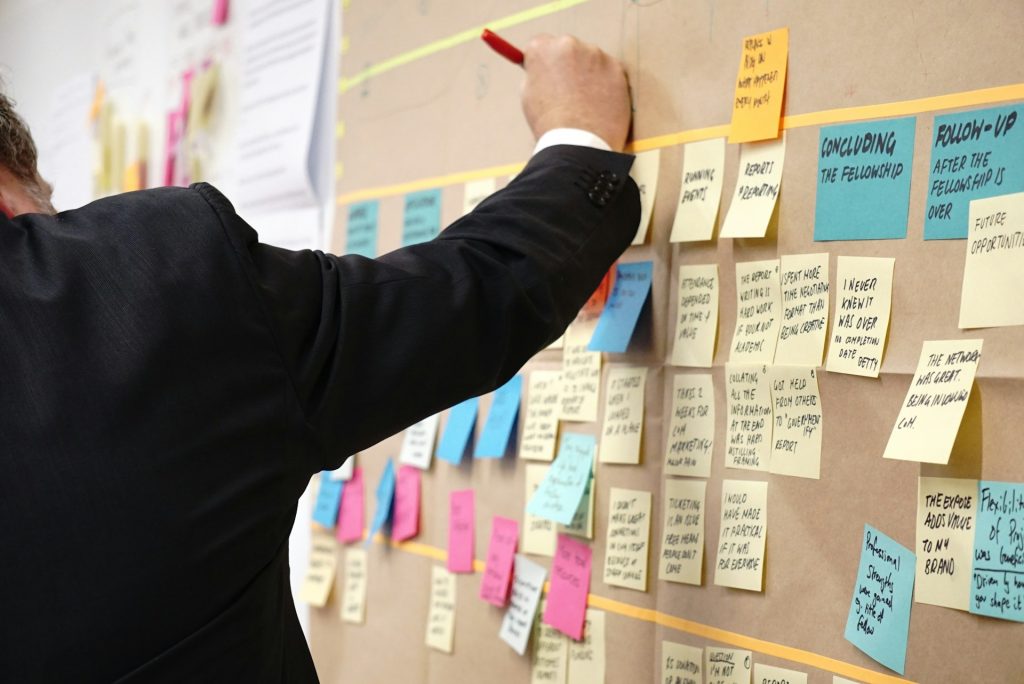Moving on from illusion and delusion
A recent study of technology-oriented projects, published by Science Direct, revealed that the most common success driver is “embracing a shared understanding of the goals”. Traditional project management models commonly refine these goals to Scope and Cost. Agile projects often introduce Quality too, and while these are success factors, there are others that are demonstrably and measurably more important. Working with our clients over the years we have found that a more holistic perspective of the goals is likely to create a more successful outcome.
Many initiatives start with the seed of a great idea, but if we do not provide the conditions for them to grow we are likely to be disappointed with the results. When we don’t pay attention to the quality and conditions of how we begin, expectations are likely to be unclear, miscommunications rife, purpose potential and goals are fuzzy, and confusion and delusion are common-place. As one client recently put it, we end up chasing a “Green Status” rather than real success.
“The single biggest problem in communication is the illusion that it has taken place” – George Bernard Shaw
Taking steps to improve the situation, you might have seen people initiating work using techniques such as: Programme or Project kick-offs, Product discovery, Product explorations, Lean Business Canvas workshop, and so on. All of these can fit under the umbrella term of ‘Inceptions’ and while these broaden our perspectives, we can do better.

Working Backwards for Better Beginnings
Let’s start at the end. How do you, your team, your stakeholders, your customers usually feel when you complete a project?
In many projects we see a good level of exhaustion, people wanting to work on something different, customers not as engaged as we imagined they would be, teams and suppliers have endured their relationships rather than thrived in them, and people are mostly just relieved to have crossed the imaginary finish line which is marked by the usual round of celebratory emails, and maybe drinks to review the memories of our shared pain and near-misses.
Taking a step back before we begin, we might consider a few useful questions:
What would we actually like all of these people to be thinking, feeling, saying, doing at the end of our project?
What would a good ending look like for all of these people?
What will we know at the end that we don’t know now?
What will we be saying about our experience of working together on this initiative?
What numbers will really indicate success?
Starting with a shared, flexible view of what success looks like for all concerned allows you to negotiate subtle, complex, evolving, and human priorities consciously.
Teams like to work in different ways. Customer needs and product landscapes evolve. Learning emerges while we work. People join, and people leave. Opportunities and priorities change. The world is fluid and maybe our definition of success, and our route to get there should be too.

The Journey
For you to be able to do your best work on this project what needs to be true?
If we are doing valuable and meaningful work, what will we notice?
Who or what needs to be prioritised to achieve our goals?
What will we learn as we progress that we don’t know now?
How might our past experience get in the way of our future success?
How will we know whether we are on track, should change direction, or stop?
Creating space to discuss the environment that will help us achieve our goals, and learn as we go allows us to start with an aligned expectation, understanding, and broader vision. So when we are aligned on how we want to end, how we want to collaborate, how we want to stay on track, how we want to measure real success, how we want to prioiritse, and how we want to learn and lead then we can start in a way that takes these into consideration and allows us to check on these as we progress. Simplifying goals to Scope, Cost and maybe Quality minimises the value of many other key elements. On one level it does make the task of project management and steering quicker and easier and at the same time it also reduces the value of it, so maybe there is room for “Better”? .“People are not afraid to fail, they are afraid to fail in a new way.” – Unknown

The Questions
Here are some categories that we consider and additional questions that we ask when we support clients starting new initiatives.
Which of these feel useful to you?
What other questions do you ask or not ask, and what does that say about your light and shadow as a team, leader, organisation?
If this article has struck a chord, for some reason please drop us a line. We love to collaborate and support people of the journey to working better.
Ways of leading: Vision, Purpose, and Outcomes
- What is the greater vision for doing the work?
- What is the purpose of the work we aim to accomplish?
- What are the problems we’re trying to solve for users, customers, the organization?
- What do we know, and what don’t we know?
- What outcomes will this project or product generate for our users, customers, and our organization?
- How will we feel at the end of the project or initiative?
Ways of Managing: The Work
- How will we get feedback from users, customers, and stakeholders so we know we’re building the right things?
- What is the scope of the work we are looking to deliver?
- How might we pursue a technical approach for meeting business outcomes?
- What is the smallest thing we can deliver so that we can pivot or persevere?
Ways of Working: Collaboration and Interactions
- What skills and capabilities do we need to get things done?
- What are the roles and accountabilities of people working throughout the project or product?
- What do we need from each other to grow a smoother end to end process of delivering value?
- What light-weight principles will we embrace to get things done?
- What relations will we have built?
- What knowledge and experiences might we have developed by the end of the project or initiative?
Way of Measuring: Metrics & Forecasting
- What light-weight metrics will be meaningful and to whom will they benefit at which stage of our lifecycle?
- What do we think we know, and what could we measure to test our assumptions?
- What does success look like?
- How will we know when we’ve done enough?
- With the information we have right now, what is a meaningful forecast for the work we need to accomplish?
- How will we visualise our project or product roadmap?
Ways of Governing
- What light weight documentation will we need?
- What is the purpose of any useful recurring forums or interactive meetings throughout the life-cycle of the project or product?
- How will we know that we’re working in service of our shared purpose?
- What potential blockers and impediments might impact us?
- How will we manage our blockers and impediments?
Ways of Learning
- What might we need to learn to deliver?
- How will we learn as a group, team, or team of teams?
- What resources will support us to reflect and grow as leaders and teams?
- How will we capture and share our learning organisationally?

